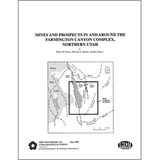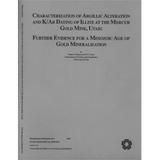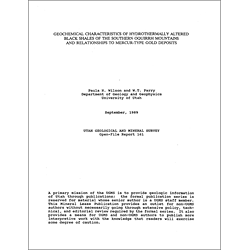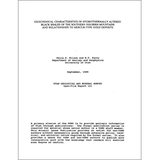Geochemical characteristics of hydrothermally altered black shales of the southern Oquirrh Mountains and relationships to Mercur-type gold deposits (OFR-161)
By: P. N. Wilson and W. T. Parry
Alteration of the Manning Canyon and Long Trail Shales in the southern Oquirrh Mountains has resulted in (1) oxidation of organic matter and pyrite; (2) replacement by phyllosilicates; (3) silicification; (4) porphyroblast growth; (5) fossil replacement by phyllosilicates; (6) phyllosilicate veins of various combinations of illite, chlorite, pyrophyllite, kaolinite, and Fe-oxides; (7) depletion of organic carbon, calcium carbonate, alkali and alkaline earth metals; and (8) enrichment of aluminum and hydrogen.
The purpose of this study was to investigate hydrothermal alteration in two black shales found within the southern Oquirrh Mountains, the Mississippian Long Trail Shale of the Great Blue Limestone and the Pennsylvanian/Permian Manning Canyon Shale. The objectives of the study were to (1) characterize the mineralogical and geochemical characteristics of the altered shales; (2) determine any relationships between these characteristics and gold mineralization, and (3) attempt to date the gold mineralization.
Other Information:
Published: 1989
Pages: 64 p.
Location: Tooele and Utah Counties
Media Type: Paper Publications









